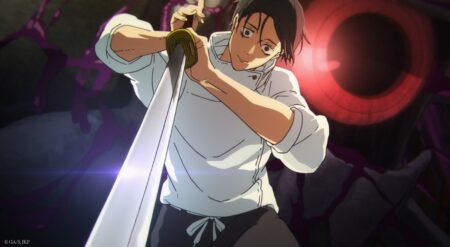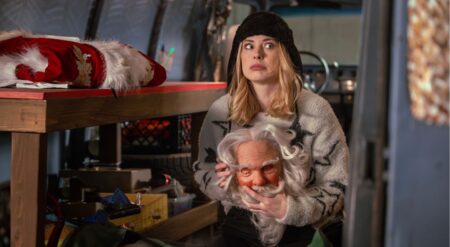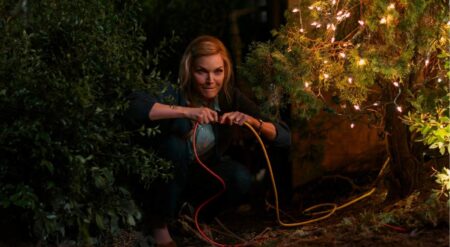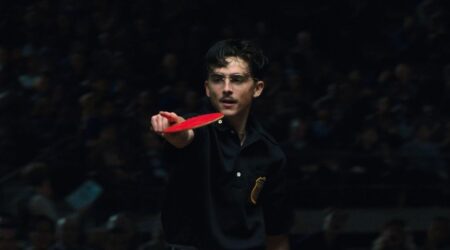Korean animation has found a home in our pop culture. Korean studios often provide contact support on projects or bring to life some of entertainment’s largest franchises with Studio Mir’s work on Devil May Cry, Star Wars: Visions, The Legend of Korra, My Adventures With Superman, and Netflix’s Witcher animated films. However, Korean stories have often been adapted by Japanese studios, most recently with Crunchyroll’s Solo Leveling. With Lost In Starlight, that changes.
Branded as Netflix’s first Korean animated feature film, Lost In Starlight is an original story directed by Han Ji-won, written by director Han and Kang Hyun-joo, and animated by Climax Studio. It’s also one of the few times American audiences will have immediate access to a Korean-animated story, created by a South Korean team. A romance story first and a sci-fi story second, this Netflix Original Film is intricately animated and beautifully written in equal measure.
Set in 2050 Seoul, Lost In Starlight follows astronaut Nan-young (Kim Tae-ri/Maitreyi Ramakrishnan) as she works toward her ultimate goal: to visit Mars. The daughter of the first Korean astronaut chosen for a Mars mission, Na-young, is dedicated to following her mother’s footsteps. But when she fails the final test to onboard the fourth Mars Expedition Project and finds herself a back-up, she has to find a way forward.
Nan-young is brilliant and driven, but her job is her life.
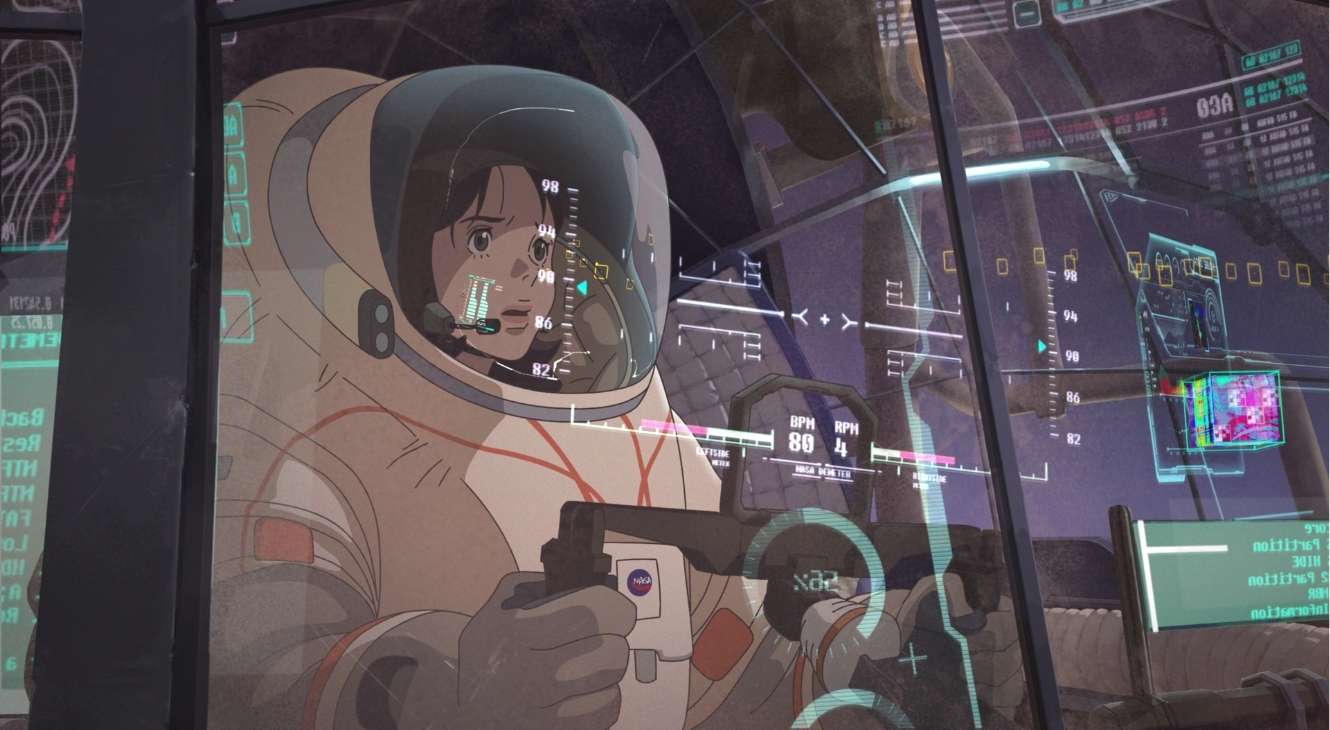
Sad and clinging to her mother’s old record player, she’s knocked over by Jay (Hong Kyung/Justin H. Min). Where Na-young is constantly looking to the stars and learning how to build things for the future, Jay is holding onto the analog. A musician at heart, Jay buries his dreams in a vintage audio equipment shop. What starts as a couple of meetings trying to fix Nan-young’s record player soon turns into a romance that pulls both of them off their set paths.
As they root for each other and dream of a new future together, the couple has to learn how to be supportive without pushing the other away. When Nan-young is given another chance to fly to Mars, which is all she ever wanted, she can’t say no. But with only an understanding of watching Nan-young’s father send messages to Mars in the hope that his wife isn’t really dead, Jay can’t help but want to be selfish.
Lost In Starlight focuses on an adult relationship with physical intimacy and emotional messiness. Neither of our lead characters is perfect. Jay is running away from his dream and avoiding it altogether. But Nan-young is consumed by hers. However, instead of a rippling effect of misunderstanding we traditionally see in romantic stories, Lost In Starlight looks to unpack the insecurities both characters are facing.
Adult relationships are messy, but it’s how couples move forward that makes the difference.
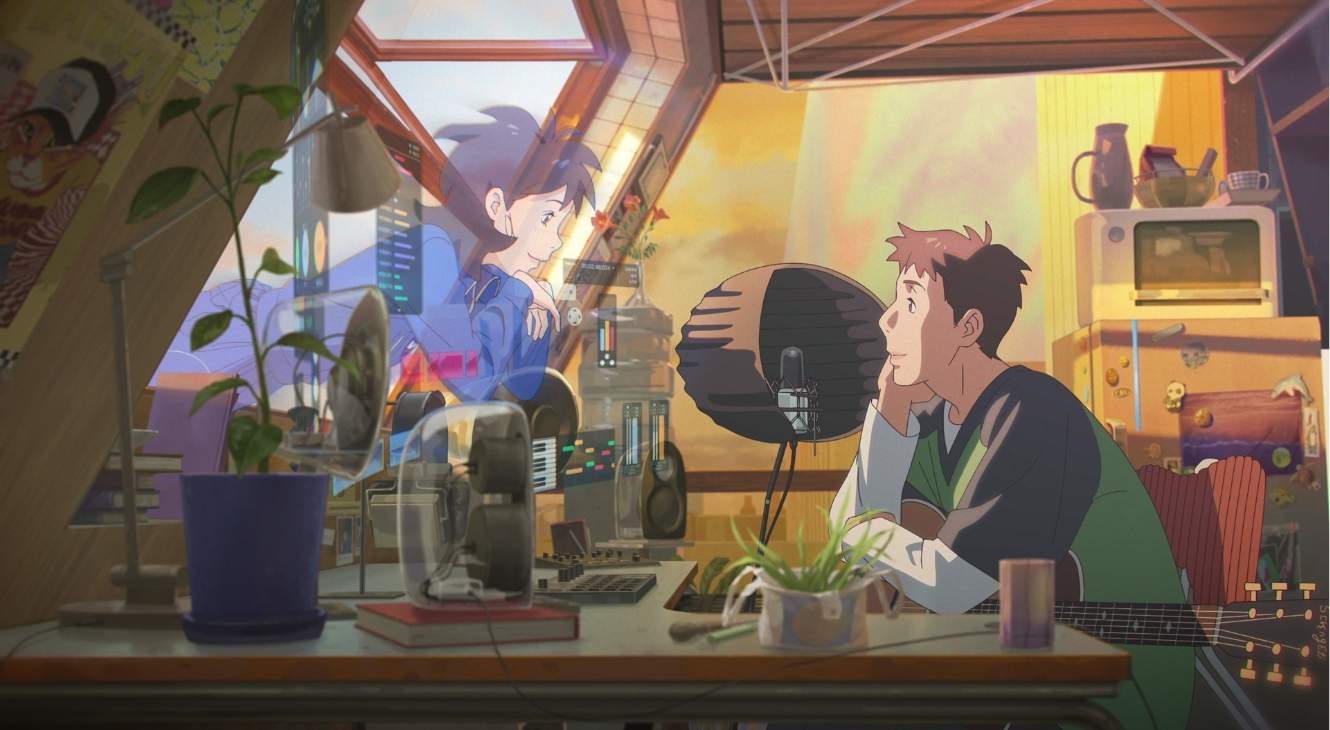
For Jay, he’s watched his music be ripped apart and stitched back together, eliminating his vision. As such, he can’t perform on stage and has tried to leave music behind altogether. For Nan-young, having lost her mother 20 years prior, the wound isn’t fresh. Instead of being terrified of space, Nan-young must reach it. She has to stand where her mother stood and follow her.
But when Jay begins to understand the danger of going Mars, his selfishness wins out. Nan-young wants a vision of her father standing in front of her, not her boyfriend trying to keep her on Earth. She wants a man who sees her drive and passion and doesn’t ask her to keep her feet on the ground. But for Jay, he just wants her to be alive and be with him.
Instead of traveling down this road of miscommunication, Lost In Starlight chooses to let its lead characters talk it all out. They repair their damaged foundation, and more importantly, they build out a plan for a world where the stars separate them. In this way, Lost In Starlight aims to capture the reality of disagreement and, more importantly, how two people who love each other and want to be with each other will find a way to stay together, even through insecurity and, in this case, the danger of outer space.
Lost In Starlight lets Jay be flawed, but also know when to say he’s sorry.

Together, Jay and Nan-young balance each other out. They’re good for each other, and as Jay rebuilds Nan-young’s broken record player, they also rebuild each other. But their strengths come from the fact that their flaws run deep, and instead of ignoring them, the couple relies on each other to get through it.
Lost in Starlight’s third act is breathtaking. It’s a vision of exploration and emotion that embraces a near-psychotic experience that continually keeps the audience on edge while also pushing us to tear up and cheer for Nan-young.
Director Han Ji-won’s attention to visual details evokes emotion just as much as her and Kang Hyun-ju’s narrative and dialogue. There is always a tenderness, a warmth, and a yearning applied to each scene. Lost In Starlight brilliantly captures the way your life sparks when you find someone to love and be loved by. The confidence it gives you, but also the flaws it uncovers when you lay yourself bare for someone else.
Lost In Starlight is gorgeously animated. The attention to detail in capturing individual line work from strands of baby hair that can’t be tucked behind a character’s ear to the lines on their face when emoting, all create a stylized but authentic vision.
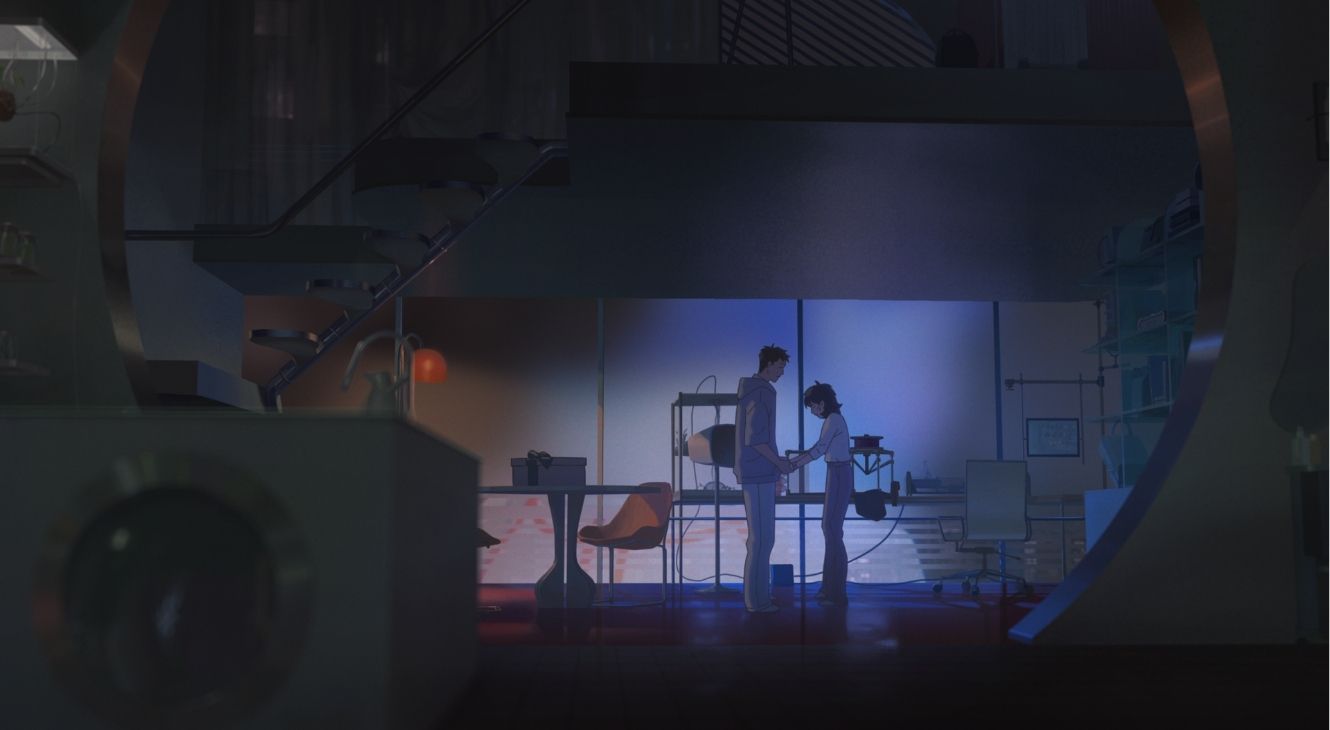
Add in the rare moments of 3D computer animation and it all works so well to differentiate a Martian landscape from the human elements or a large moment on stage as it becomes something intimate. Balance is key between the two artistic styles.
But where Climax Studio finds balance, their environmental art thrives on excess. Each shot of the city, on the street, in a room, is layered with remnants of life. The backgrounds are extremely rich representations of the time and place our two leads are in.
This works to help deliver exposition in some cases, as the projected screens across buildings and doorways give the audience and the characters the news. At the same time, vending machines, records, clothes on the floor, and other small pieces of the world help build out Lost In Starlight, making each setting feel lived-in.
These small elements beautifully capture a world just slightly outside of our own. While the vintage parts that Jay works with call back to the 2020s, the advancement of technology is clear throughout Seoul. Only, the advancement is taken through a lens that exaggerates our current tech and expectations and then stretches it further into what Seoul will be in 2050.
Climax Studio crafted a gorgeous and live-in world for Lost In Starlight’s audience.
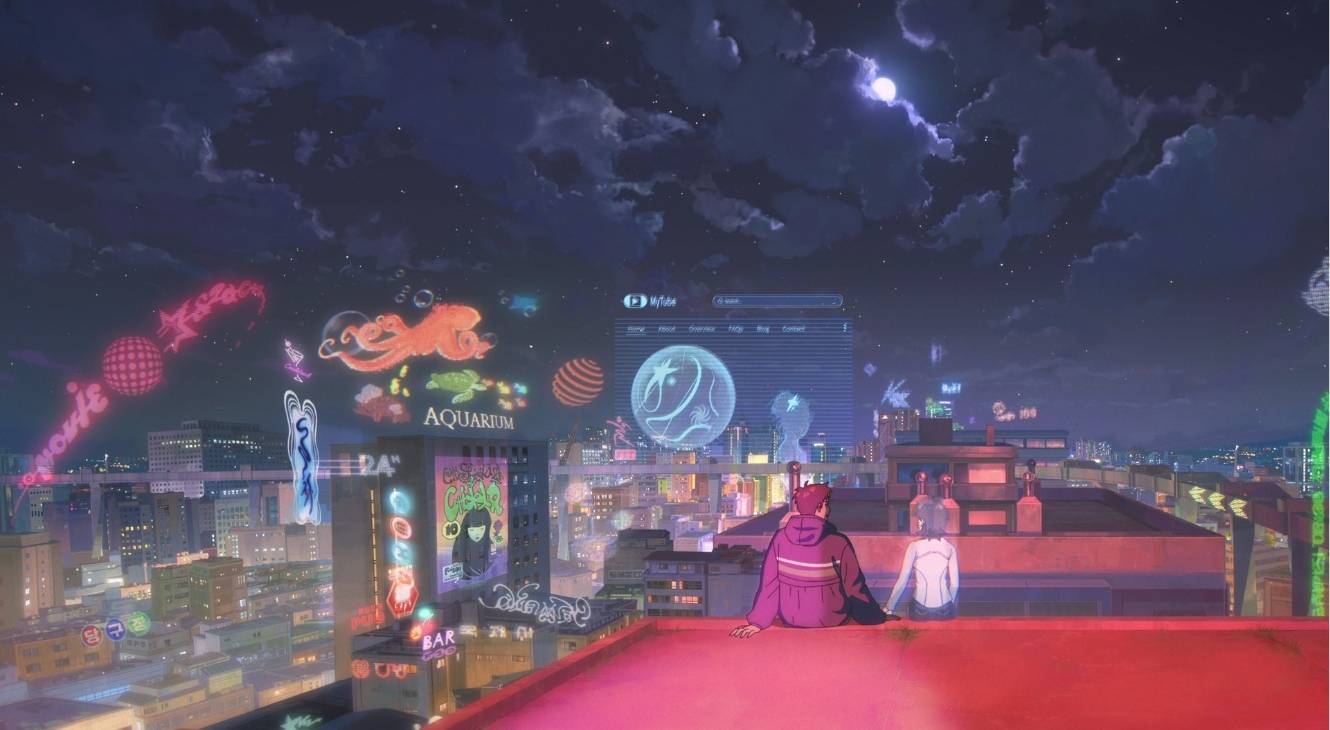
The science fiction elements of Lost In Starlight is extremely well done and ultimately make the story otherworldly enough to escape into it, but grounded enough to see the world as it was before. And all of that is in the little things. The watches, the music, making calls. Still, Lost In Starlight doesn’t lose itself in its futuristic representation. Instead, it pulls the audience in and asks us to be at home alongside our lead couple.
The last element of Lost In Starlight’s animation is the shifting color palette. Blues and pinks shift to red and yellows, and greens tell the audience the emotion they feel. Lighting and color move mountains to establish the film’s atmosphere and mood, and it pays off.
While science and dreams are a core element of Lost in Starlight, music is what propels the narrative. It is what connects Jay and Nan-young before they’ve even met, and its what grounds the couple while they’re apart. If there is one critique I have for the film, it’s not in the story or the animation, but rather the glaring quality difference in the voice acting from Korean to English.
Music is key to Lost In Starlight’s narrative, but in English, it doesn’t always succeed.
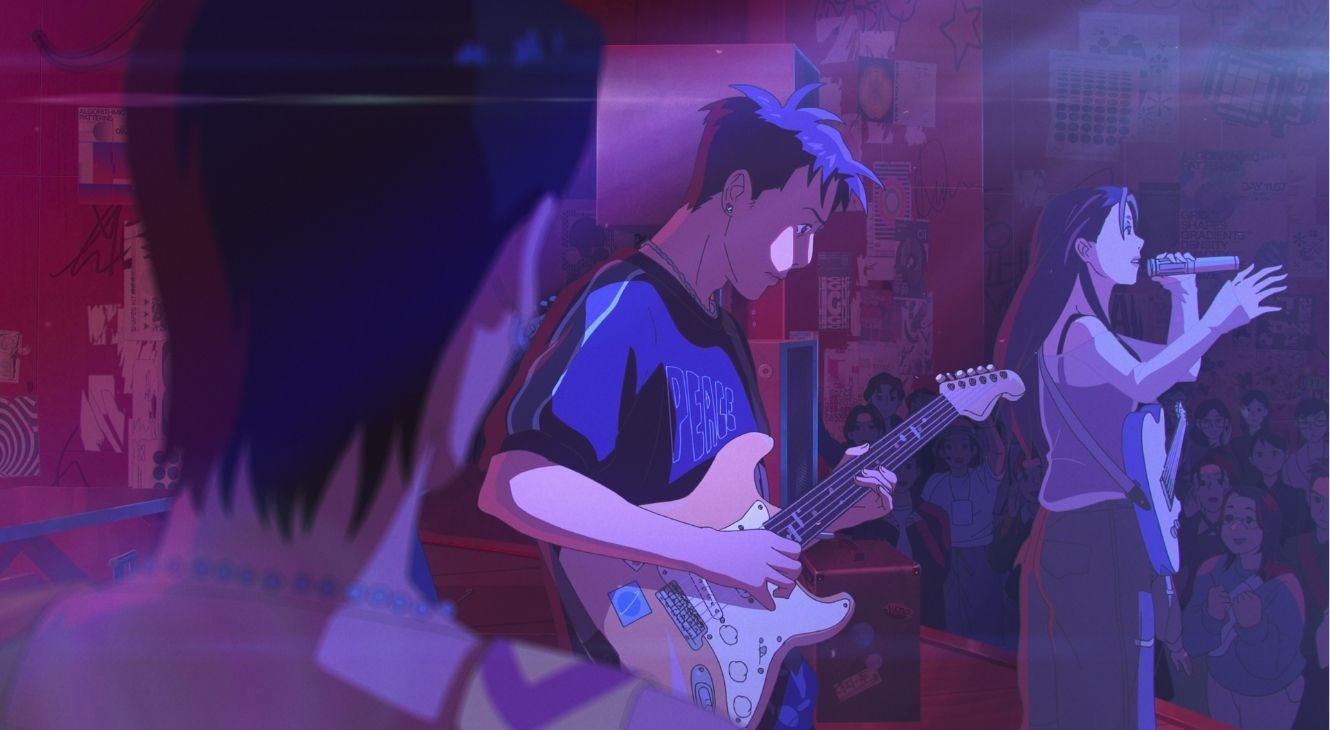
The songs, their melody, and their lyrics are important; however, for “Bon Voyage,” the couple’s theme throughout the film, the English performance pales in comparison to the Korean version. While I don’t envy any localization team not dubbing the cast challenge to match their Korean counterparts, the choice to localize songs into other languages rarely succeeds. Since many English-speaking viewers choose to watch content dubbed, it’s important to note when things don’t align.
That said, Lost in Starlight’s soundtrack is a showstopper. And yes, BTS ARMY, that is Kim Taehyung (V) on the track you hear in the trailer. More importantly, singer Kim’s crooner inspiration comes out in full force, balancing a film set in 2050 with analog nostalgia, as its characters regularly tap into. While this animated feature film isn’t a musical, it is driven strongly by its soundtrack, and that’s a beautiful choice.
Regarding adult animated feature films that get global recognition, Japanese animation has been pushing the boundaries. However, with recent releases in Europe, Latin America, and now Korean animation studios and storytellers are stepping into the spotlight.
Lost In Starlight is about taking the side path and allowing someone to come on your journey.
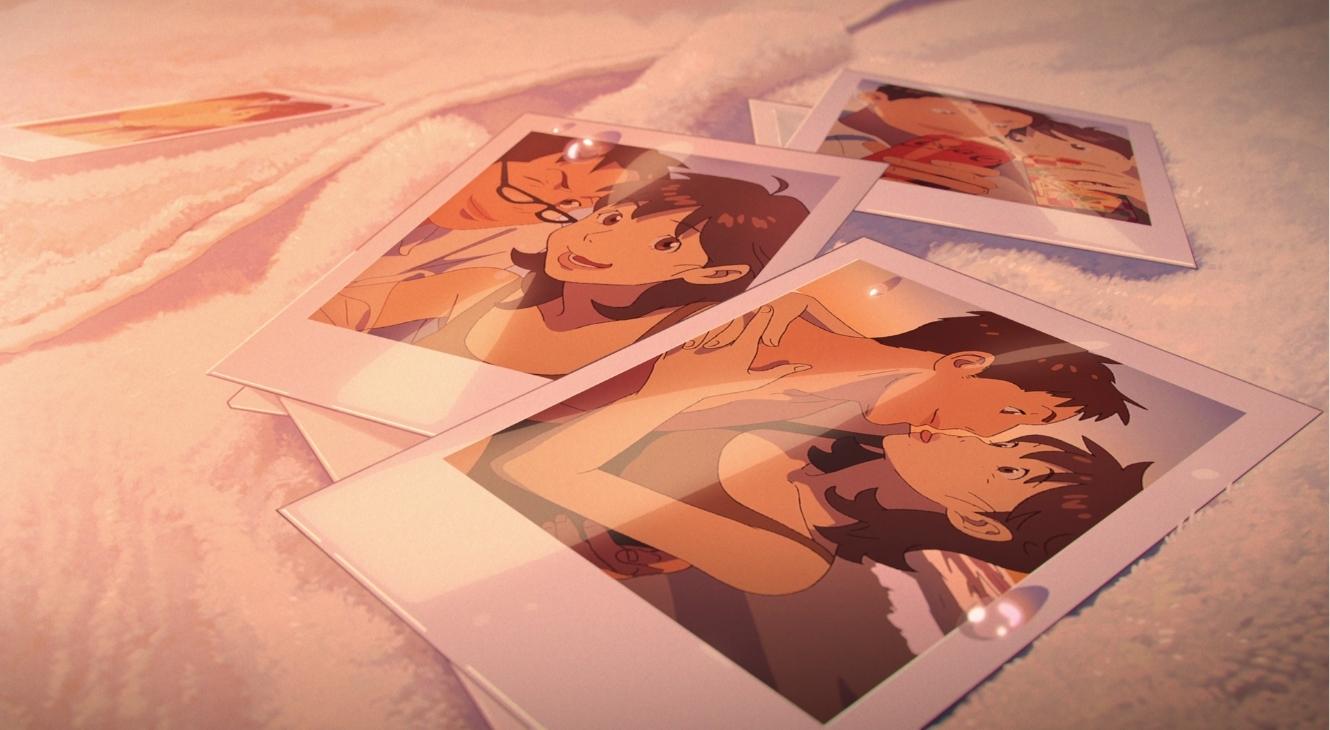
Lost In Starlight is a win not just for Korean animation but a win for the animation landscape as a whole. Hopefully, the beauty, intimacy, and strength of Jay and Nan-young’s love story can propel Netflix to keep expanding its animated films. Animation if global; it’s about time everyone has access to watch it.
Lost in Starlight is gorgeously animated. Its soundtrack is perfectly coordinated, but most importantly, its message to enjoy the side paths in life is its strongest achievement. While the film takes place in Seoul, its message it universal. In a failing late-stage capitalist dystopia, we seem to be spinning closer to every day, our default is to equate ourselves to our career goals and dreams. By making our work our lives, many in our generation miss out on the life and love they could have had if they only had taken a longer path.
The people we meet in life, those we love, may not come to us in the way we expect. They may knock us off course and, in the process, make us feel more alive. And that’s why these detours are worth having. Reaching a dream is wonderous, but having someone rooting for you and inspiring you is what makes it worth it. Take the side quest, fall in love, and experience the world with someone else.
Lost In Starlight is streaming May 30, 2025, exclusively on Netflix.
Lost In Starlight
-
Rating - 9/109/10
TL;DR
Lost In Starlight is a win not just for Korean animation but a win for the animation landscape as a whole. Hopefully, the beauty, intimacy, and strength of Jay and Nan-young’s love story can propel Netflix to keep expanding its animated films.



